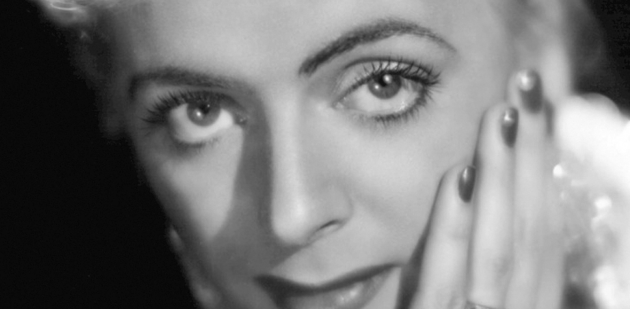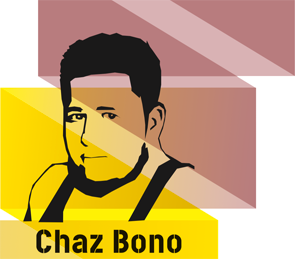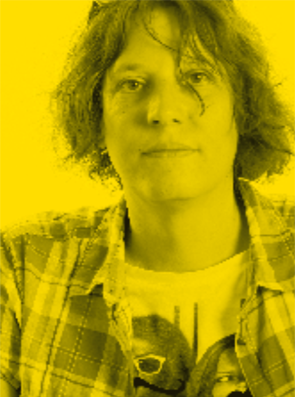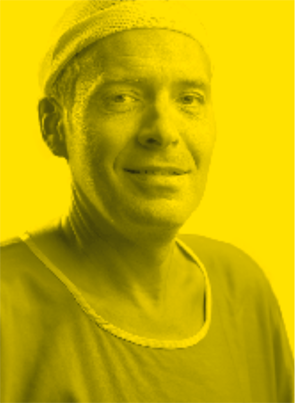Once shunned by society, transsexuals are gaining more and more rights. This is the story of one woman, born a man, who has lived through this social transformation.

Throughout her childhood, Michelle Biolley hid the truth from everyone. No one knew her secret. Not her friends, not her teach- ers, especially not her family. She was suffering. Although born a boy, she knew that she was a woman. “I had this thing between my legs, and I didn’t know what to do with it,” she says. The problem was that Michelle Biolley grew up in the wrong place, a small village near Winterthur. And at the wrong time. “It was the 1980s, and I couldn’t say anything,” she says. “In the rural community where I was raised, we didn’t talk about that kind of thing.”
But today, the situation is radically different for all transsexuals. The American star Caitlyn Jenner made the cover of Vanity Fair. The singer Conchita Wurst has turned the concept of gender upside down. Amazon even produced a television series, “Transparent”, which documents the sex change process. “We’ve come a long way,” says Michelle Biolley, relieved.
Official discrimination of this segment of the population began in the second half of the 19th century, says Susan Stryker, a University of Arizona professor and author of the book “Transgender History”. The expert explains that for the first time, doctors considered people with gender dysphoria (the contemporary medical term) as “sick”, and you could be sent to an asylum or prison! That’s when the first political groups emerged to de fend transgender rights, mainly in New York and Berlin.
But everything changed in the 1990s. Transgender activism intensified, and the social conception of transsexuals shifted.
It was not until shortly after World War II that the transsexual issue was again seen in a positive light. The case of the American Christine Jorgensen revealed the phenomenon to the general public. In 1952, the former GI became the first person to talk publicly about her gender reassignment surgery. People from all over the world heard her story, as the young woman appeared on the cover of every magazine on the planet. A Hollywood film was even made about her life.
At about the same time, the medical field also started seriously looking into the subject. The term “transsexual” was coined in 1949. Specialised medical cen tres began to open. In 1966, the American endocrinologist Harry Benjamin published the first standard work on the transgender issue called “The Transsexual Phenomenon”.
But the trend was reversed in the 1970s. The feminist and gay movements highly criticised transsexuals, says Susan Stryker. Being trans was once again perceived as an illness, she notes. Clinics and hospitals specialised in transsexual cases closed.
That negative climate lasted for several decades. And it was tough on Michelle Biolley until the early 1990s. As a young teenager, she would secretly go and read books on transsexuals in Zurich. One day she went to Berlin, where she met the first trans groups in her life. When she returned to Switzerland, she finally decided to talk to a doctor. He sent her to see experts at a specialised medical centre in Basel.
“The staff there humiliated me,” she says. “They came out with such nonsense.” They advised her to wear mini-skirts, high heels and too much make-up “to gain acceptance from the community.” She was asked if “she wanted large breasts, because trans- sexual women like large breasts.” A therapist told her that she was such a good-looking guy that she didn’t understand why she would want to become a mind,” Michelle Biolley says, “so I decided to take charge of my transition myself.” In 1995, she ordered hormones online. And she transformed her body without help from anyone.
But everything changed in the 1990s. Transgender activism intensified, and the social conception of transsexuals shifted. Susan Stryker talks of a new notion of the “future”, how people were again enthusiastic about the technology. Transsexuals became a symbol of progress, she says, as if it were a futuristic body, altered by science.
“The media exposure did our community a world of good and brought visibility to our cause,” saysHenry Hohmann, president of Transgender Net- work Switzerland, the umbrella organisation that defends the rights of Swiss transsexuals.
In the 2000s, generation Y – more tolerant towards gender issues – reached adulthood, the professor explains. As a result, transsexuals were increasingly present in the media. Films and television series touched on the topic. Transsexual celebrities went public. “The media exposure did our community a world of good and brought visibility to our cause,” saysHenry Hohmann, president of Transgender Net- work Switzerland, the umbrella organisation that defends the rights of Swiss transsexuals.
In Switzerland, basic health insurance is now required to cover the costs of a transition. The conditions are now more flexible to obtain authorisation for a name or gender change on a passport. “Over the past five years, a lot of things have changed,” says Friedrich Stiefel, head of the Liaison Psychiatry Service at the Lausanne University Hospital (CHUV). “People used to have to be at least 25 before having gender reassignment surgery, which is no longer the case. And they had to see a psychiatrist for two years,” he says. “Today, things are more flexible. Decisions are made on a case-by-case basis.” Young transsexuals are nolonger afraid to talk about it and ask for a transition. “I have more and more patients, and they are increasingly young,” says Olivier Bauquis, a surgeon specialised in gender reas- signment at CHUV.
The CHUV does at least one sex change procedure per week.
But things are far from perfect. “Trans people should be able to change their name and gender on their passport without having to see a psychiatrist,” says Henry Hohmann. Some people still suffer from discrimination. “People are still getting insulted in the street,” he says. “Hatred and lack of understanding haven’t disappeared.” And that can impact the careers of people who change their gender. “In 2014 and 2015, 20% of people who had a transition lost their job because of that decision,” Henry Hohmann says.
He also complains of the shortage of care involved in a transition. “Not enough hospitals do the operation in Switzerland,” Hohmann says. And those that do perform it too rarely, so the staff doesn’t have the necessary expertise.”
Olivier Bauquis, who has been perform-
ing gender reassignment surgery at
CHUV since 2007, agrees. “As only a
small number of hospitals perform the
operation correctly, we have too many
patient applications at CHUV,” he says.
“We do at least one sex change procedure per week. That’s too much for our
small team.” The treatment is looked
down on in the medical community. “Some health care providers and doctors
think it’s against nature to do that kind of
operation,” says the surgeon. “That pressure is hard to take.”
But life is much easier for people who have undergone the transition. Today, Michelle Biolley is comfortable with who she is. She has become a film-maker and an activist for the transgender cause. She is happy. ⁄
Christine Jorgensen, born George William Jorgensen Jr. on 30 May 1926 in New York, is the first person known to have undergone sex reassignment surgery. Her story is being told all over the world as the young woman appears on magazine covers across the globe. A Hollywood film was also made that was inspired by her life. She chose the name ’Christine’ in honour of Christian Hamburger, the Danish surgeon who performed the operation.

The daughter of Cher and Sonny Bono is unique in that she grew up in the public eye. Chaz Bono, a for- mer lesbian, began a short career as a musi- cian before becoming an activist for LGBT rights. He began his transition in 2008.

The winner of the 1976 Olympic decathlon, Bruce Jenner was the cliché of the American alpha male. He later married Kris Kardashian and featured in the television reality show “Keeping Up with the Kardashians”. In April 2015, Bruce Jenner confessed that he considered himself a woman. Revealing her new identity on the cover of the American magazine “Vanity Fair”, beckoning “Call me Caitlyn”, she became a transsexual icon.

The haute-couture phenomenon Andrej Pejic worked as a male model for years, walking for both men’s and women’s collections. She was noted for her androgynous features, and in 2014 officially became a transsexual woman named Andreja.

Lana Wachowski and her brother Andy are the creators behind the “Matrix” trilogy. Lana Wachowksi secretly began her transition in 2002 and revealed her new identity in 2012.

Michelle Biolley, born a man and now a woman, campaigns for transgender rights.

Surgeon Olivier Bauquis performs one sex change procedure per week.